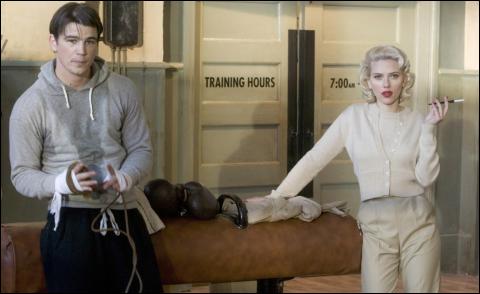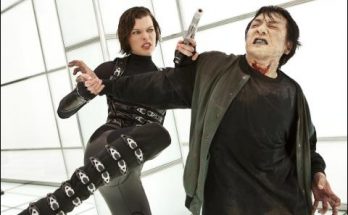Betty’s Journey to the Silver Screen “Who are these men who feed on others? What do they feel when they cut their name into somebody else’s life?” — Detective Bucky Bleichert
Elizabeth “Betty” Short was born July 29, 1924, in Hyde Park, Massachusetts. Like many young aspiring actresses in boom-era World War II, she was chasing a big dream: to make it in Hollywoodland. At the age of 19, she headed west to California, bouncing from her father’s home in Vallejo to the city of Santa Barbara before heading south to L.A.
During her time in the city, her tale briefly reads like that of many an ingénue. She auditioned for a number of screen tests, lived for a time at the Chancellor Arms Apartments and was rumored to have frequented hotspots like the Pig & Whistle on Hollywood Blvd., the Formosa Café on Santa Monica Blvd. and the Biltmore Hotel on Grand Ave. Indeed, it was at this very hotel, on January 9, 1947, that Betty was allegedly meeting a gentleman friend. It was the last time she would be seen alive. Because of Betty’s raven hair, her penchant for dressing in black, habit of wearing a beautiful flower in her hair and the 1946 release of the Alan Ladd and Veronica Lake film The Blue Dahlia, she was given a nickname to tease her in life and own her in death.
People became fascinated with her lurid tale, one seemingly plucked straight out of a Raymond Chandler or Dashiell Hammett novel. Indeed, most who became involved with the case became obsessed with either saving or trashing the Dahlia’s reputation. The gruesome murder of the young girl took Hollywood and the country by storm in 1947.
The entertainment capital was filled with mob bosses, dirty studio executives, corrupt cops and people willing and ready to take advantage of a young woman…and the juicy details of her murder. For months, the L.A. Examiner, Los Angeles Times and every rag that could make up or scrape up a story about Betty splashed headlines below their mastheads—from “Who Killed Betty Short?” to “Black Purse, Shoes: Hot Dahlia Leads.” Hers would become a story of Hollywood legend… and occupy one young boy’s imagination for a lifetime.
Betty entered the mind of novelist James Ellroy when he was just a child. Only 11 years old when he received Jack Webb’s crime anthology, “The Badge,” from his father, the L.A. native was entranced by Webb’s 10-page summary of Elizabeth Short’s demise. His mother, Jean Hilliker, had been strangled only months before in a brutal (and to this day unsolved) crime, and the boy’s inability to openly grieve her death transferred into an obsession with the Dahlia.
Ellroy, like many others before and since, would chase the story of this iconic Hollywood girl for years. He recalls, “I bike-tripped to the Central Library. I scanned the Dahlia case on microfilm and gorged myself on vanished L.A. I time-tripped ’59 to ’47 L.A. I made L.A.-now L.A.-then. I began to live in the dual L.A. that I’ve lived in ever since.”
In fact, Ellroy would wait to write his seventh novel—the first of his L.A. quartet—1987’s “The Black Dahlia,” until he “built story-telling muscle” with his earlier works, “Brown’s Requiem,” “Clandestine,” “Blood on the Moon” and “Suicide Hill.” The author admits he “needed to brace myself for life in L.A. ’47.” For Ellroy, the Dahlia wouldn’t rest with the end of his book. He would go on to write a 1996 novel entitled “My Dark Places,” a memoir of his mother’s 1958 murder. “I had to go through a very long journey with Elizabeth Short and write ‘The Black Dahlia’ before I could get to my mother. Elizabeth Short was always the fictional stand-in for my mother. And my mother and she transmogrified, it was quite a heady brew. They are as one, in my mind, much of the time.”
Screenwriter Josh Friedman was originally tasked to hone Ellroy’s 300-plus-page “The Black Dahlia” into a filmable screenplay for director David Fincher—initially attached to the project in 1997—and producers Rudy Cohen and Moshe Diamant. “David and I worked on it off-and-on for several years,” Friedman notes. “I would write a draft, and we would talk about it…then we’d work on other projects.”
Eventually Fincher departed the film and, according to Friedman, “Brian De Palma came on, and it was like a locomotive. At Brian and Art’s (producer Linson) urging, we made some significant changes to the script, and we were off.” Of his source material, the screenwriter offers, “I tend to not think of it as a genre book, but simply as historical fiction. I went with the way Ellroy told the compelling story…he has such a unique way of interweaving. I very much kept to the structure and the attitude of his characters engendered in the book.”
“James creates a whole noir world, and the way he tells his stories is very complex,” director De Palma adds. “His language is so lush. Josh was a very good barometer of what you could and couldn’t do with his work. He lived and breathed Ellroy’s complex, dark material for a decade, forcing the material into Ellroy-ese, never taking the simple route. Art and I worked with him for close to a year before the script was ready to go.”
De Palma acknowledges that he wanted to not just tell the story of the Dahlia but explore the world of fictionalized characters in 1947’s L.A.—those who were profoundly affected by the crime. He responded to Friedman’s interpretation of the “triangle of Bucky and Lee and Kay. There’s a history between Bucky and Lee that goes back to the Zoot Suit Riots and culminates in the first section when Bucky throws a fight in order to get the money to put his father in an old-age home.”
A filmmaker known for plot twists and switchbacks, De Palma also loved that “in the material, everybody lies. In any sensitive dramatic scenes where you think someone’s revealing something, they’re usually revealing the opposite of what they said before. Everybody’s a compromised character, and you watch Bucky descend into this hell and get caught up in it.”
Now comfortable with the screenplay (and suitably financed for overseas distribution), the director and the producers began looking for a domestic distribution partner. A meeting with the then vice chairman (now chairman) of Universal Pictures, Marc Shmuger, would clench the deal and the studio signed on for domestic rights to the film during production.
Producer Art Linson reflects, “It’s a tradition in Hollywood that movies that are dark are hard to get made. What distinguished this from a traditional murder is the effect it had on everyone around it. This movie is not about just about who did it, it’s about the obsession and impact it had on the lives of the LAPD and women connected to these detectives.”
He offers, “There are few directors left who understand what films noirs even are. Brian has the perfect grasp of this material. His sequences play to the great visual style needed for Dahlia.”
Most notably after securing foreign financing for the film, the production team had but one small task: find a cadre of actors who were outstanding freshman Hollywood players, but also had the acting credentials to pull off Ellroy and Friedman’s lines…and the ability to channel old souls from the films noirs days gone by. Enter five young actors named Josh, Scarlett, Aaron, Mia and Hilary.
Views: 59



